African lake cichlids are fascinating fish. They are some of the most colorful freshwater aquarium fish you’ll find.
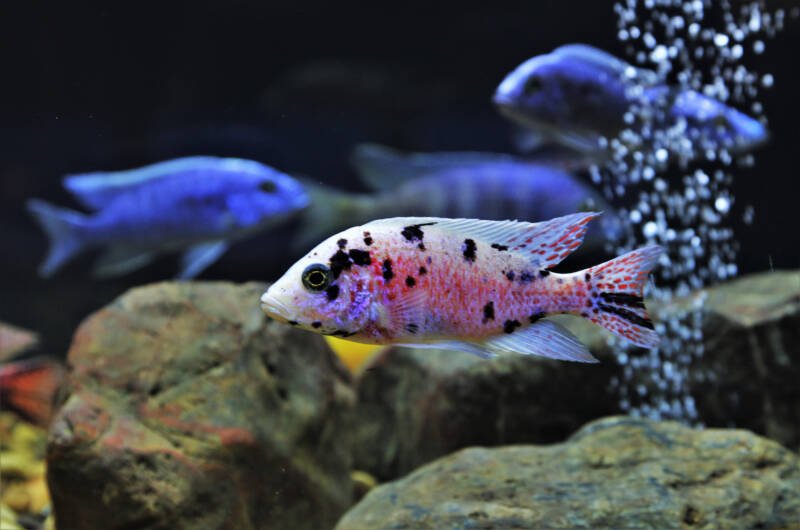
Keeping them in an aquarium can be a challenge if you’re a novice. There’s more to keeping these fish than simply choosing by color or size.
You need to know their temperament and space requirements.
African cichlids have a reputation for fighting and acting like bullies. Placed in the wrong aquarium environment, these fish will fight till the death.
But if you plan ahead and prepare an aquarium for these fish, you’ll have success.
In this article
What are African Cichlids?
Cichlids are a type of freshwater fish. The term originates from the term Cichlidae, a classification of freshwater fishes.
Biologists estimate that there are around 2500 species of cichlids.
New species are discovered each year. Cichlids are egg layers and care for their young.

African cichlids live in the African Great Lakes, which include Lake Victoria, Malawi, and Tanganyika.
These lakes are unique because they have a high mineral content. The pH can sometimes rise to 9.
African Great Lakes often have a rocky bottom, where schools of African cichlids feed and breed.
Behavior in Nature
Africans are very territorial. Once they’ve established a territory, they chase any fish that comes too close.
Many African cichlids like to live in-between rocks and caves. They’ll come out to feed, find a mate, and battle with intruders.
African Cichlids in the Aquarium
African cichlids can become quite aggressive in the aquarium.
Even in a large 100-gallon tank (400 l), a fish may claim a large territory as its own. The urge to have their own space is very strong.
Also, if the wrong mix of species is added to the tank, fighting will occur.
Not all species are compatible. We’ll discuss fish selection later in the article.
Types of African Cichlids for Your Aquarium

Mbuna
The most common type of African cichlid is the mbuna.
That name means “rockfish” in the language of the Tongan people living around Lake Malawi.
Keep in mind you’ll often see them with common names and their Genus name, which helps correctly identify them.
There are many varieties of mbuna. Here are a few of the best mbuna for beginners:
1. Zebra Cichlid (Pseudotropheus spp.)
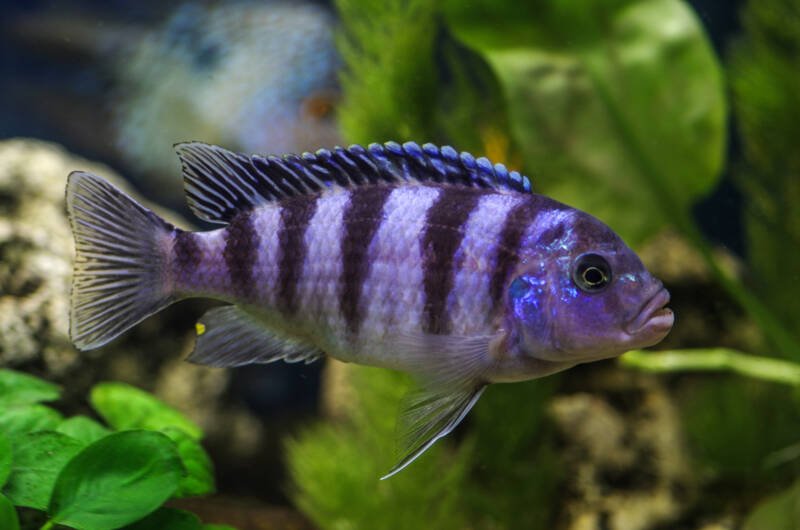
Pseudotropheus, also known as zebras, are colorful and lively.
Even though they are sold as small fish (.5-2 inches or 1.3-5 cm), they’ll grow to up to 6 inches or 15 cm. Temperament is semi-aggressive.
2. Electric Yellow Cichlid (Labidochromis caeruleus)

Bright yellow mature fish (6” or 15 cm) have contrasting black bars on their side. Temperament is peaceful to semi-aggressive.
3. Fuelleborni Cichlid (Labeotropheus fuelleborni)
They are available in blue, black and orange forms. This fish is highly territorial. Temperament is aggressive toward others.
4. Maingano Cichlid (Melanochromis cyaneorhabdos)

They are deep blue fish with light blue stripes. Temperament is aggressive toward others.
Neolamprologus Group
The Neolamprologus group of African cichlids is beautiful and interesting fish from Lake Tanganyika.
5. Fairy Cichlid (Neolamprologus brichardi)
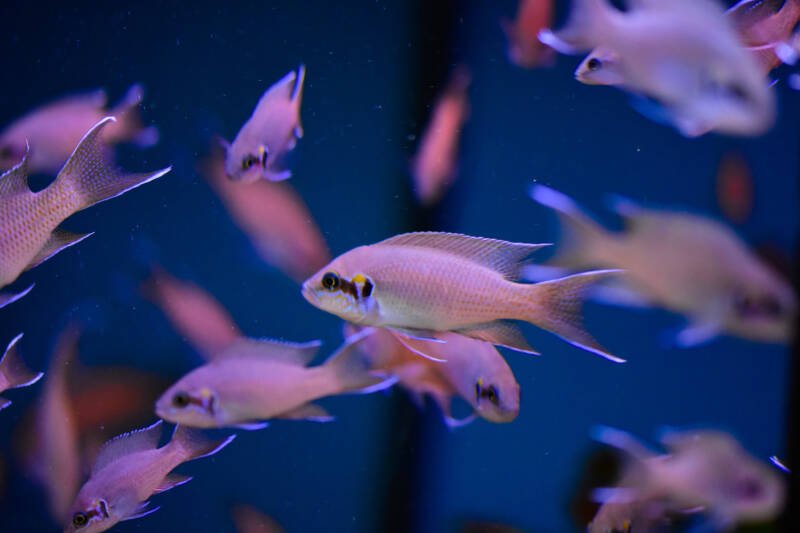
Brichardi or fairy cichlid comes in an albino and a pinkish-white variety.
The long fins and slender body are quite beautiful. Temperament is peaceful.
6. Lemon Cichlid (Neolamprologu leleupi)

Lemons have a similar shape to brichardi but are bright yellow. Temperament is peaceful.
7. Electric Blue Cichlid (Sciaenochromis fryeri)

If you’ve got an aquarium larger than 55-gallons (200 l), consider the electric blue cichlid. The electric blue hap almost glows a deep cobalt blue.
It grows up to 8 inches (20 cm). This species will eat smaller fish and can be quite territorial.
Frontosa
8. Frontosa Cichlid
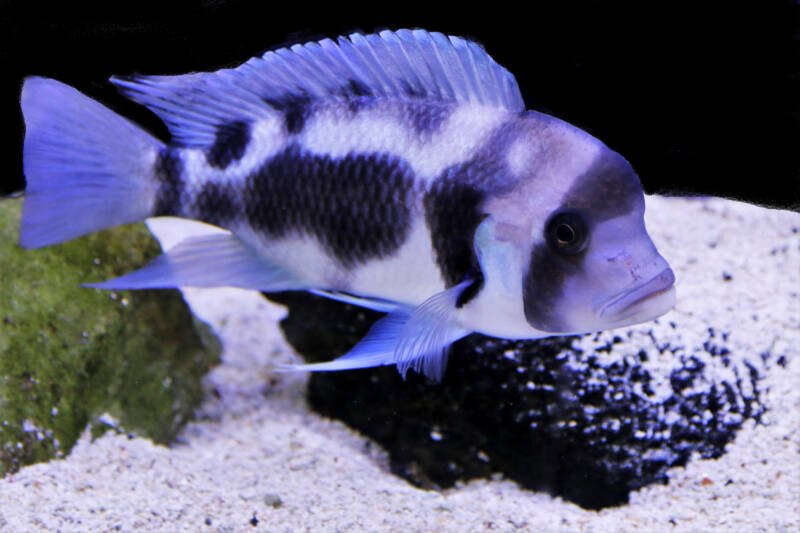
Another African cichlid that’s large and beautiful is the frontosa.
Humpheads (several different species) grow to about 12 inches or 30 cm and need an aquarium of 70 gallons (260 l) to be happy.
They’re generally peaceful with other similar size fish.
There are many more species of African cichlids. Most of the more exotic types are available online or from specialty shops.
How to Select African Cichlids for Your Aquarium
In most cases, you really need a large aquarium to keep African cichlids.
Africans are usually sold as small juveniles but quickly out-grow a 20-gallon (80 l) aquarium.
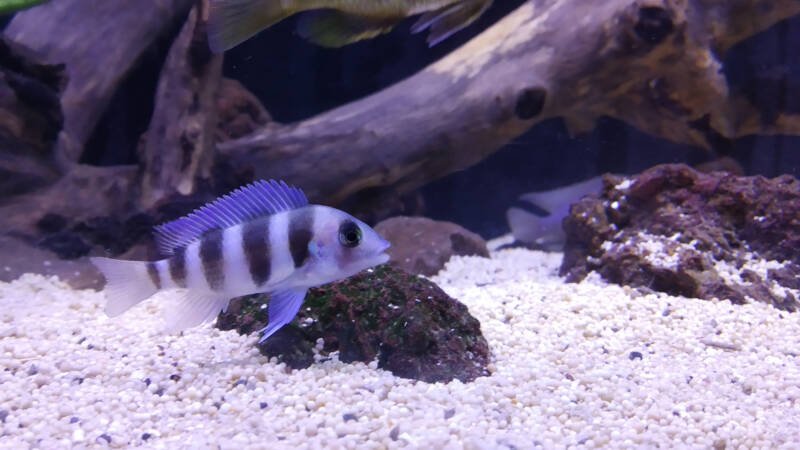
It’s important to find out all you can about the fish before purchasing it.
If you want to keep large African cichlids, you’ll have to set up a big aquarium. Here’s why.
Compatibility and Aggression
It’s tempting to toss a few small cichlids into a ten or twenty-gallon tank.
The problem is, even if the fish remain small, they become territorial as they settle in. If there is only one female, males tend to chase her in an attempt to find a mate.
Trying to keep a pair of Africans in a small tank rarely works.
The fish’s instinct takes over, and bullying behavior usually results in only one fish surviving.
If you can only have a smaller tank, your best option is to keep one African cichlid.
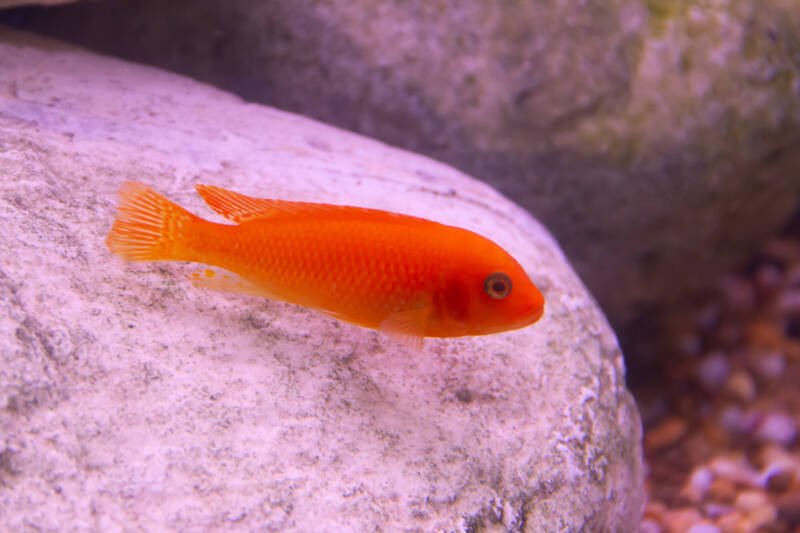
A larger aquarium gives the fish room to swim, find a niche to hang out in and not feel threatened by a neighbor.
You’ll find African cichlid compatibility charts online. The chart will help you determine which species can be added to the same aquarium.
Aquascaping the African Cichlid Aquarium
Most common African cichlids are hardy and easy to care for. Water conditions match most tap water supplies:
- pH 7.8-9.0
- KH 10-15 degrees
- GH 9-15 degrees
- Temperature 76-82F (24-82C).
The aquarium should have plenty of rock crevices and caves. In this article we describe in detail the rockwork you should provide for cichlids.
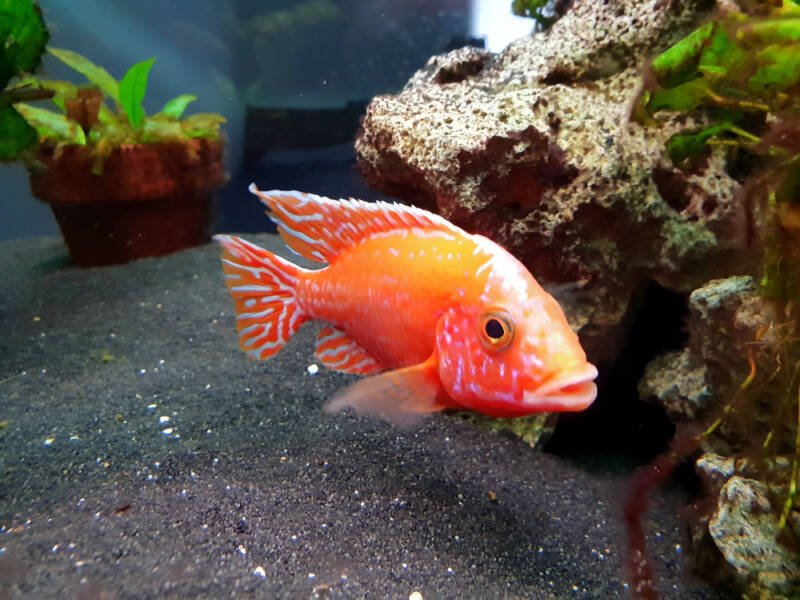
Your fish will peek out of their homes when startled. But once they recognize you, they’ll come to the glass expecting some attention and food.
Some cichlid enthusiasts put a layer of fine sand or gravel on the bottom, with rockwork on top.
- Darker sand keeps the fish calm and allows them to show their vibrant colors.
- Africans tend to dig up live plants.
- Try wedging plastic plants into the rocks.
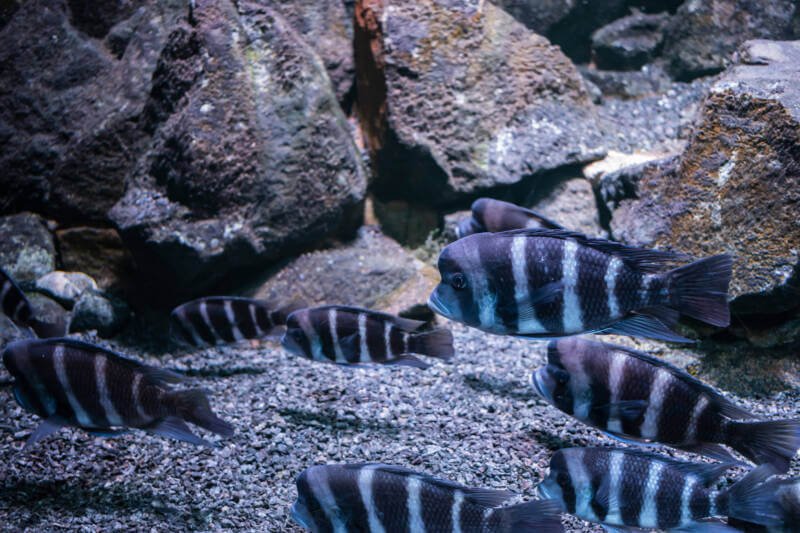
You don’t need a bright light on an African cichlid tank.
Modern LED aquarium lights allow you to dim the light and adjust the color so your fish will look vibrant.
Be sure to use a powerful filter to keep the water clear and clean. The fish enjoy a medium flow rate.
It is important to clean the filter at least once a month.
Siphon debris out of the rocks, while making water changes.
Feeding African Cichlids
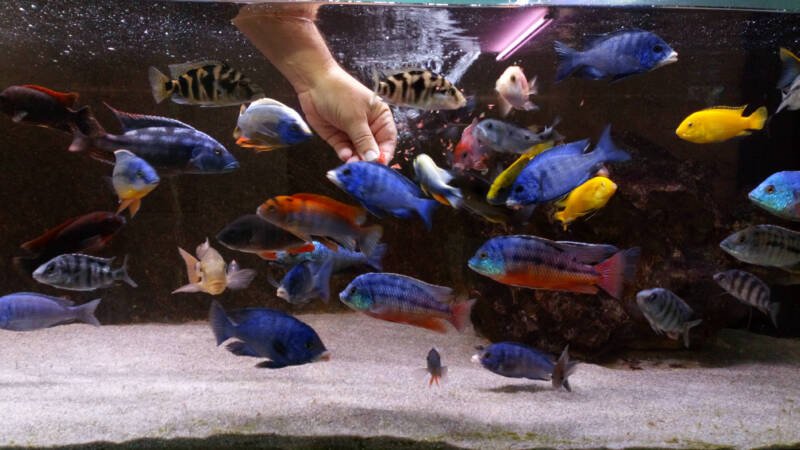
Fortunately, these cichlids are not picky eaters. Most are omnivores, eating plant and animal foods.
Flakes, pellets, and frozen foods can be fed to provide the fish with a variety of plant and animal ingredients.
You can even find veggie flakes and pellets to supplement with other types of food.
Tips For a Happy Cichlid Community
Slight Over-Stocking
Aquarists have discovered that if you slightly over-stock the tank with fish like zebras, you’ll have a colorful tank of fish that don’t fight.
For some reason, the fish choose not to battle for territory since no one really has any to call their own.
You’ll have to keep a watch on ammonia and nitrite level to make sure the water quality is in good shape.
Rockwork Rearranging
For normally stocked tanks, you may have no aggression behavior. But if you do, an easy fix is to rearrange the rockwork.
This re-sets the territories and confuses the fish. They often settle down and leave each other alone.
Adding Fish in Threes
Another trick is to add fish in threes. Start the aquarium with three similar size fish. After a few weeks, add three more.
Often when one new fish is added, everybody wants to fight the new guy.
Adding several at once throws off the desire to battle and helps the new fish settle in peacefully.
Final Thoughts
African cichlids should be kept with other Africans. In most cases, other tropical fish shouldn’t be kept with African cichlids. They just don’t get along.
A properly set up African cichlid aquarium is beautiful and provides hours of entertainment.
If you have any questions or comments, please leave them below.